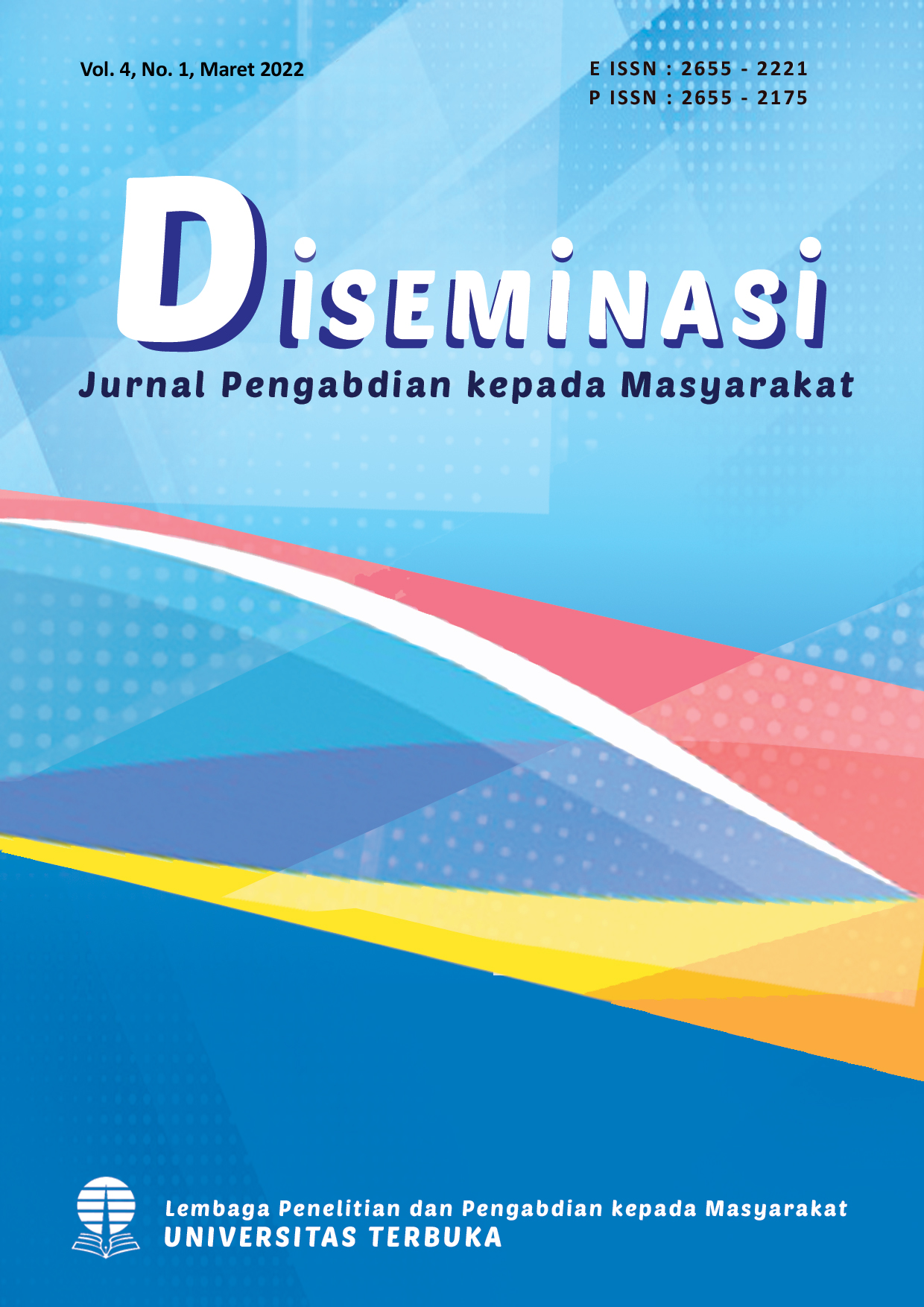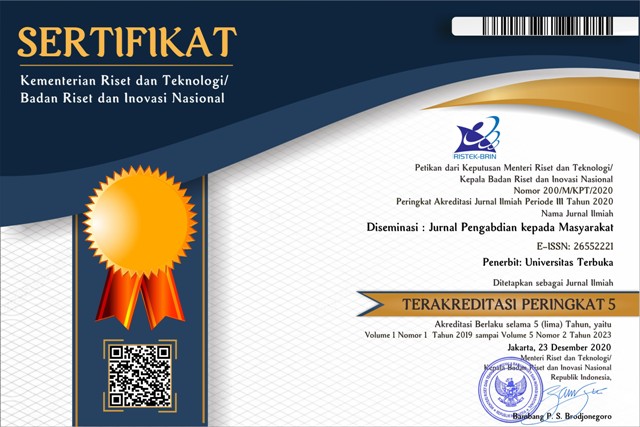PENGEMBANGAN MOTIF BATIK BERBASIS TINGGALAN ARKEOLOGI KELURAHAN LEGOK KOTA JAMBI TAHAP II
DOI:
https://doi.org/10.33830/diseminasiabdimas.v4i1.2359Keywords:
Candi Solok Sipin, Jambi, Stupa YaksaAbstract
This program is a continuation of the activities in the previous year. The newest batik motifs were inspired by ornaments and archaeological remains from the Situs Candi Solok Sipin. In 2020, batik tulis, the Makara Ekikarana motif has been produced. In 2021, the team try to make batik cap inspired by the Yaksa figure on the Makara and Stupa from the Situs Candi Solok Sipin. The batik cap is related to the purpose of preparing products at affordable prices, it's hoping that the batik is marketed more broadly. In addition, this new motif can also enrich the batik repertoire at the Rumah Batik Kelurahan Legok. The method is held in stages; the first stage is the preparation. During the preparation stage, we make motif design and make coordination with the Kelurahan Legok dan Rumah Batik. After the batik cap motif is ready, the next step is to make a stamp. After the preparation stage was completed, the next step is to produce a batik cap in 3 (three) days. On the last day, we make a product launch, the products are ready to be marketed. The results achieved include the creation of the Yaksa Stupa motif which is applied to cloth and masks.
References
Adi, A. M. W., Izza, N. A., & Supian, S. (2021). Upaya Peningkatan Kepedulian Masyarakat Kelurahan Legok Terhadap Warisan Budaya Situs Candi Solok Sipin dan Sekitarnya. Jurnal Pasca Dharma Pengabdian Masyarakat, 2(1), 1–8.
Hasan, Y. (2014). Menelusuri Asal Usul Bangsa Melayu. Sriksetra Jurnal Pendidikan Sejarah, 3(5), 27–32.
Izza, N. A., Adi, A. M. W., Mahanani, N., Resiyani, W., & Pratama, A. S. G. (2020). Pengembangan Potensi Batik Berbasis Tinggalan Arkeologi di Kelurahan Legok Kota Jambi. E-Dimas, 11(4), 573–579.
Neeb, C. J. (1902). Het Een en Ander Over Hindoe Oudheden in Het Djambische. In J. Brandes (Ed.), Tijdschrift voor Indische Taal-, Land- en Volkenkunde, dl 45: Hindu antiquities in Djambi, Indonesia (pp. 120–133). Batavia: Lange & Co.
Saudagar, F. (1990). Penafsiran Situs Solok Sipin Sebagai Tempat Pemujaan Agama Buddha. Jambi.
Sedyawati, E., Santiko, H., Djafar, H., Maulana, R., Ramelan, W. D. S., Wurjantoro, E., & Utomo, B. B. (2014). Candi Indonesia Seri Sumatera, Kalimantan, Bali, Sumbawa. (W. D. S. Ramelan, Ed.). Jakarta: Direktorat Pelestarian Cagar Budaya dan Permuseuman.
Sukandar, I. (2014). Selayang Pandang Kota Jambi: Perkembangan Masyarakat dan Kebudayaannya. Jambi.
Tideman, J. (1938). Djambi. Amsterdam: Bruk de Bussy.
Wellan, J. W. J., Sterck, E. A., & Sourij, A. (1926). Onze Eerste Vestiging in Djambi. Naar Oorsponkelijke Stukken. Bijdragen Tot de Taal-, Land- En Volkenkunde van Nederlandsch-Indië, 82, 339–383.
Downloads
Published
Issue
Section
License
Copyright and Licensing

Diseminasi : Jurnal Pengabdian kepada Masyarakat is licensed under a Creative Commons Attribution-NonCommercial-NoDerivativeWorks 4.0 International License. Allows users to copy and distribute the Article, provided this is not done for commercial purposes and further does not permit distribution of the Article if it is changed or edited in any way, and provided the user gives appropriate credit (with a link to the formal publication through the relevant DOI), provides a link to the license, and that the licensor is not represented as endorsing the use made of the work.















